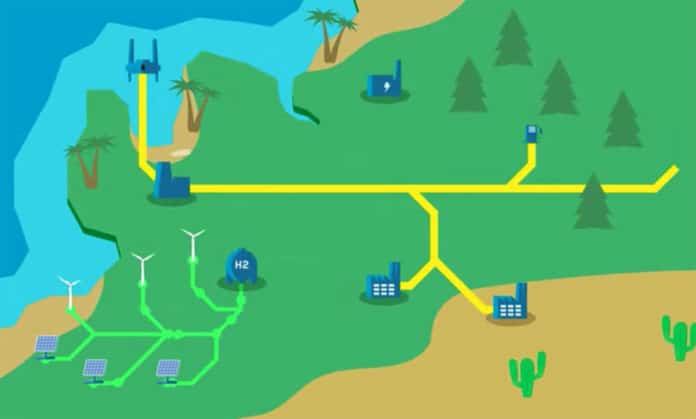Clean hydrogen is gaining recognition worldwide as a carbon-free fuel capable of making a significant contribution to addressing climate change. However, one of the main issues that make hydrogen less attractive than batteries for EV use is distribution. Hydrogen must be kept cold and under pressure and is a renewable energy context; it is generated intermittently, making the logistics of driving it around significantly more difficult than gasoline.
But hydrogen blending technology offers a potential solution. SoCalGas is collaborating with Netherlands-based HyET Hydrogen to test its new technology, called Electrochemical Hydrogen Purification and Compression (EHPC) system.
The new technology can simultaneously separate and compress hydrogen from a blend of hydrogen and natural gas. It would allow hydrogen to be easily and affordably transported via the natural gas pipeline system, then extracted and compressed at fueling stations that provide hydrogen for fuel cell electric vehicles (FCEVs). The EHPC technology is designed to provide pure highly-compressed hydrogen wherever a natural gas distribution system exists.
The EHPC technology works by applying an electrical current across a hydrogen-selective membrane to allow only hydrogen to permeate it while blocking the natural gas components. Continuous supply of electrical current builds up and pressurizes the hydrogen.
SoCalGas sets up a program to study blending hydrogen into its natural gas pipelines. To test the technology, the company will blend hydrogen gas in specific concentrations from 3 to 15%, with methane, the primary natural gas component. The gas mixture will then be injected through a simulated natural gas pipeline test system to provide performance data for optimization of the EHPC system.
With this process, about 10 kg of hydrogen can be compressed and stored every day. But, within the next two years, the EHPC technology is expected to be scaled to produce 100 kg of hydrogen a day or more from a single EHPC system. This figure will be enough to power 20 fuel cell electric vehicles.
“This is an innovative technology,” said Bill Elrick, executive director of the California Fuel Cell Partnership. “It may provide a unique and strategic way to distribute large volumes of hydrogen fuel, helping decarbonize the transportation sector.” However, there is still a long way to go before this technology is commercialized.
